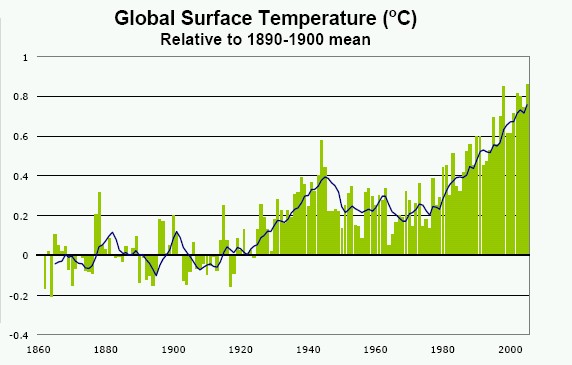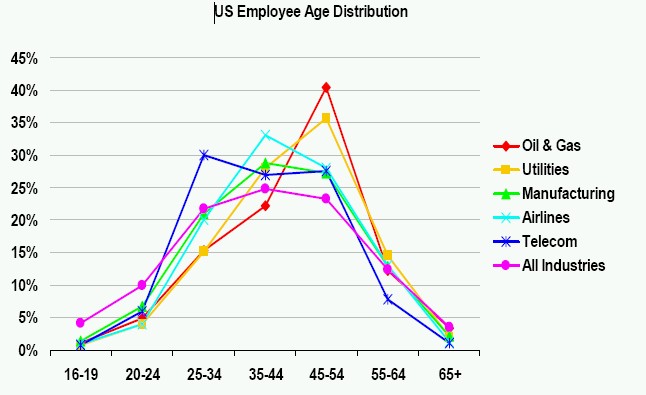Energy Insights: Top 10 Predictions for the Energy Industry in 2007
From Lauraibm
MI Summary
Full article: Energy Insights: Top 10 Predictions for the Energy Industry in 2007
- Focus on climate change will spawn investment in energy and information technologies
- Venture capital investment in energy sector will continue to expand
- Geological, technical, and economic factors will drive innovation in reserves management
- Change to daylight savings time in the U.S. will disrupt business as usual
- Aging workforce will continue to be a major challenge for energy industry US
- Aging assets and associated reliability concerns will drive intelligent grid technology investments
- Sensing technologies will drive a shift to real-time sense-and-respond paradigm
- Energy trading focus will shift to intra-day visibility, liquidity, and market behavior
- Web self-service and on-line communication for utility customers will increase
- Growth in IT spending for oil and gas companies will exceed that for utilities
Energy Insights: Top 10 Predictions for the Energy Industry in 2007
1. Focus on climate change will spawn investment in energy and information technologies
Drivers
- Climate-friendly energy policies and market response puts upward pressure on energy commodity prices
- GHG and emissions trading gain ground and move to North America —voluntary and mandatory
- Prospects of climate change bring renewed attention to Health, Safety, and Environment (HSE) area
Predictions
- Policymakers will accelerate adoption of no-and low-greenhouse gas technologies, including more expensive renewable and nuclear generation
- Equity and venture investors will continue to scour for opportunities in climate-friendly energy technologies, but too much money will be seeking too few near-term profitable activities
- Emissions trading will become more active, with companies investing in technology to accommodate trading; generators and refineries will work on optimization technology that accommodates emissions trading
- Companies will invest in information technology, including monitoring, reporting and safety control systems, to meet HSE requirements and to prevent negative impacts
2. Venture capital investment in energy sector will continue to expand
Drivers
- VC investment through Q3 of 2006 is already 3x all of 2005
- Leading VCs from other sectors starting to make significant investments in “cleantech”
- Sector is now third-largest VC investment category (after biotech and software)
- Growing concern about a “bubble,” but long-term market drivers and fundamentals appear strong
- National, state, and global policies driving investor confidence; pension funds also making large investments Drivers.
Predictions
- VC funding curve will flatten somewhat, but continue to grow over next 2–3 years
- An increasing share of total North American VC investments will be targeted at “cleantech” opportunities, approaching 10% by 2009
- VC money will flow to “less crowded” sectors: energy efficiency,non-silicon solar, energy storage, sensors and controls, advanced applications, and specialized E&P technologies —as well as related areas such as advanced materials and nanotechnology.
3. Geological, technical, and economic factors will drive innovation in reserves management
Drivers
- Increasingly difficult to find new conventional reserves and to quantify heavy oil and unconventional gas reserves
- Regional peaking of mature fields due to techno-economic viability constraints surrounding lifting operations
- Tightening down on reserves reporting by government and analysts in light of elevated stock valuations and energy prices
Predictions
- Expect to see large capital investments (including IT) in deep sea, heavy oil, and unconventional gas exploration on a global scale
- Companies will also invest in intelligent completion technology (e.g., Shell/Halliburton WellDynamicsjoint venture) and CO2sequestration and injection technology to maximize long-term reservoir recoverability
- Increased accuracy and transparency of reserves estimation and reporting will be enabled by improved workflows that connect the dots from reserves to production to source geological, seismic, and petrophysical data
4. Change to daylight savings time in the U.S. will disrupt business as usual
Drivers
- Daylight savings time will begin 3 weeks earlier (Mar. vs. Apr.) and end 1 week later (Nov. vs. Oct.) as a result of EPAct2005
- EPAct2005 specifies that Congress can repeal the change after one year, if savings are not achieved —this could be the worst of both worlds, requiring firms to make changes twice
Predictions
- Energy companies will expend extra resources to change “hard coded” dates in IT applications, otherwise volume and billing calculations could be incorrect andviolate contractual agreements —table-driven date changes will pose fewer problems
- Companies will also divert resources to communications across market entities (e.g., scheduling, nominations, retail transaction hubs, commodity trading), which will need to be extensively tested to ensure consistency between demand and supply obligations
- Utilities with time-of-use (TOU) meters and interval data recorders (IDRs) without two-way communications will be forced to spend money on making changes to the devices, with an on-site visit costing from $40 to $200
5. Aging workforce will continue to be a major challenge for energy industry US
Drivers
- Crisis will hit oil and gas industry harder and faster than utilities due to demographics and surging demand for oil & gas
- In E&P, there is an increase in the level of activity without an influx of new geoscientists and engineers
- Utilities are less reliant on niche (geology, geophysics, petroleum engineering) college graduates, and are more reliant on craft labor
Predictions
- Upstream oil & gas companies will lead in the use of IT to address this issue, including investments in applications (e.g., work and asset management, process automation), workflow, and content delivery
- Utility companies will focus more on non-IT solutions, such as long-term staffing plans, re-training, college and vocational programs and outsourcing
- Leading utilities will adopt IT solutions for work and asset management
6. Aging assets and associated reliability concerns will drive intelligent grid technology investments
Drivers
- Lack of investment in T&D assets over the past 30+ years
- Significant reliability and capacity problems in certain regions —recent NERC reliability assessment calls for action
- EPAct2005 sets mandatory reliability standards
- Vendors strengthen R&D on intelligent grid
Predictions
- T&D asset owners and operators will invest in advanced information and engineering technologies for operation and maintenance of the grid including:
- Remote asset monitoring and measurement (sensors, meters, IEDs)
- Real-time data transmission and performance monitoring
- Real-time decision support (modeling, visualization, simulation, analytics)
- Data aggregation and common info modeling
- Utilities will include intelligent distributed energy resources and demand response programs in their portfolios
7. Sensing technologies will drive a shift to real-time sense-and-respond paradigm
Drivers
- Upstream oil & gas continues to deploy sensing technologies, communications, and analytics through digital oilfield initiatives
- Sensing technology advances, overcoming barriers of harsh environments, communication limitations, and security concerns
- Sensing technologies become embedded in new equipment with replacement of aging assets
- Lower cost and greater availability of devices, communications, and analytics
Predictions
- Utilities will recognize sensing technologies as critical for managing operations and maintenance of the grid and generation plants, and plan for system-wide deployment —not all companies will be ready to enable the “respond” portion of the sense-and-respond paradigm
- The line between engineering and information technologies will continue to blur, with increased joint ownership between IT and lines of business for process control and information systems
- Digital oilfield concepts will be extended to oil & gas downstream operations
8. Energy trading focus will shift to intra-day visibility, liquidity, and market behavior
Drivers
- Hedge funds falter and blame IT systems —still no major changes in valuation of mark-to-market anticipated in the near future
- Weather and freight derivatives increase in popularity
- Exchanges merge and proliferate globally (CBOT/CME, ICE/NYBOT, Dubai)
Predictions
- Energy trading companies will continue to pursue intra-day visibility to position, focusing not only on technology but also process
- Vendors will start to develop and offer products that focus on predicting market behavior and understanding liquidity risk
- As delivery risk increases with global uncertainty and lack of capacity, energy companies will focus on logistics (shipping, pipeline nominations, rail delivery)
- Trading companies will continue to focus on meeting regulatory standards as they move into phase 2 of Sarbanes Oxley compliance and as the rating agencies define their conditions for assessing trading companies (due January 2007)
9. Web self-service and on-line communication for utility customers will increase
Drivers
- The number of customers with Internet access is growing and becoming more diverse
- Customers want self-service options and increased choice
- With smart metering, there will be pressure for more in-home displays and advanced communications with smart appliances and environmental systems
- Regulatory and internal utility pressure to expose customers to costs
Predictions
- Utilities will offer more rate choices and will enable customersto run on-line “what if” scenarios
- The pace of adoption of live chat and other on-line communication technologies will increase over the next year
- Service call scheduling and appointment notification through webself-service and text messaging will continue to be adopted by utilities



